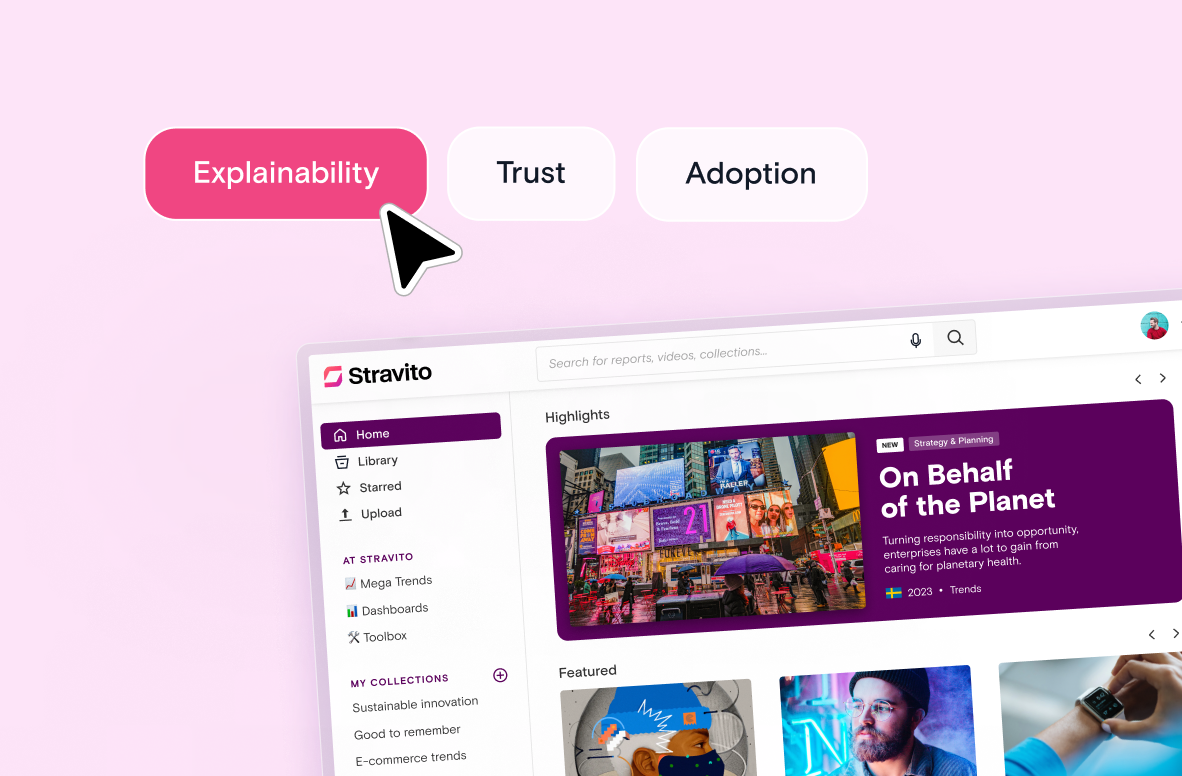In many markets today, innovation is necessary for survival. However, as a fairly abstract concept, innovation can be challenging to realise. Large companies, in particular, often have difficulty executing it. In a survey conducted by BCG, 80% of executives said that innovation was a top-three priority for their organisations. But only 30% said that their companies were good at it.
So, why is that? While predicting successful innovation is complex, we reviewed some of the latest research on innovation barriers and identified three common reasons why efforts in large companies tend to fall short.
Common Reason #1: Generating innovative, customer-centric ideas is easier said than done.
In their research, BCG has found that innovation strategies are often inward-looking, oversimplifying or failing to take into account the variety of external trends and psychological factors shaping consumer choice. This is an easy mistake to make, as combing through the data and discovering actionable insights is time-consuming. In situations where a decision needs to be made quickly, this can lead us to make decisions without considering all information. For example, a series of experiments recently conducted by professors at the University of Chicago found that people often make decisions before they have evaluated all evidence.
When applied to customer-centric innovation, this can mean that ideas are prematurely pursued. For example, many large consumer-facing companies have started to innovate by incorporating sustainability into their products and marketing. However, while an increasing number of consumers report positive attitudes towards environmentally friendly brands, products, and services, only a fraction actually follow through with purchase.
Such human contradictions are abundant and could mean the difference between successful and unsuccessful innovation. This makes it essential to always consider a new solution from the customer perspective.
Common Reason #2: Innovation isn’t actually being incentivised.
Business loves predictable growth. But innovation is often unpredictable and doesn’t always result in immediate growth. Thus, attempts to innovate are often met with skepticism at large companies, despite many espousing its importance. A survey of 270 corporate leaders published in Harvard Business Review found that cultural issues were the second biggest obstacle to innovation, cited by 45% of respondents.
Particularly if previous attempts have been unsuccessful, the culture at large companies can be unwelcoming to future innovations. This might mean that innovation is stopped before it can even start. In such situations, the need for innovative ideas to be based on data-backed hypotheses is crucial. When employees are able to point to the data and clearly articulate their arguments for trying something different or innovative, it’s likely they will feel more empowered to defend and advance their ideas.
For example, if a proposal to create a potentially controversial, socially-conscious marketing campaign is based on a variety of research, such as current macro trends, customer demographics, and brand attitudes, it will be easier to get a full understanding of the opportunities and risks that can be expected. This allows for innovative ideas to be considered on their merit rather than a gut-based aversion to change or failure.
Common Reason #3: Employees aren’t able to experiment quickly and often.
The same survey of 270 corporate leaders in strategy, innovation, and R&D found that while only 18% said that their companies had difficulty detecting signals to innovate, the inability to act on critical signals or developments was reported as a barrier by 42% of respondents. More than half of the survey respondents said that "the 'ability to test, learn, and iterate'" was a key facilitator of innovation.
Harvard Business School professor Stefan Thomke has found similar results and argues that in order to achieve successful innovation, companies need to make experimentation a daily habit. In his research on companies who succeed in innovation, he has found that they are running hundreds or even thousands of experiments every year. He explains that by experimenting frequently, the consequences of failure are reduced and unfavourable offerings can be eliminated early on. This allows for increased focus on solutions more likely to succeed.
When conducting business experiments often, it is essential to be able to find and organise information quickly. This is especially true for the literature review that leads to hypothesis generation and experimental design, as well as for the results and learnings used to inform iterations. Ensuring that information can be easily found and published within the organisation helps prevent the experimental process from being slowed down.
Fostering innovation isn’t easy, but there are steps you can take to make it easier.
The reasons we’ve detailed above are all interrelated. In order to produce innovations your customers will love, you need to have a comprehensive understanding of what they want and need. But in order to maintain a comprehensive understanding, you need to be able to experiment with frequency and speed. And if employees don’t feel empowered to try out ideas, the motivation to pursue innovation will be scarce.
By identifying and addressing these common issues, you can increase the chances that innovation efforts will thrive in your organisation.
Want to learn more about how you can address these barriers to innovation? We’re happy to talk with you about how Stravito can help your organisation's specific needs. Reach out to us here or send us an email to hello@stravito.com




